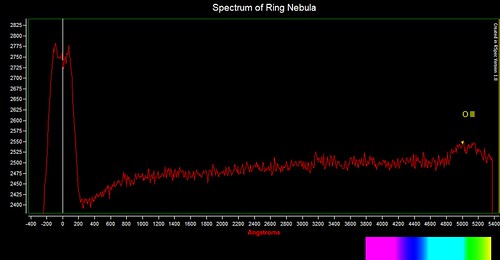Anyway, it is easy to make the grating. Details are here: https://theamateurengineersg.wordpress. ... ctroscopy/
The camera with grating installed:
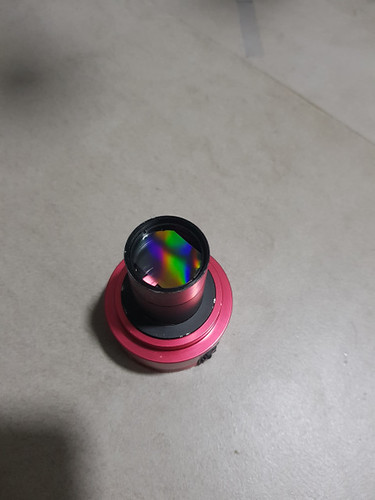 2018-08-31-01-11-21 by Cyrus Beh, on Flickr
2018-08-31-01-11-21 by Cyrus Beh, on FlickrHere's the spectrum of Vega, before instrument calibration
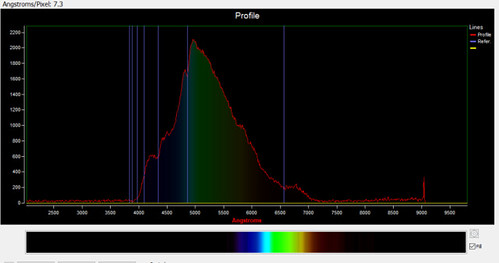 vega-with-hydrogen-balmer by Cyrus Beh, on Flickr
vega-with-hydrogen-balmer by Cyrus Beh, on FlickrAnd here it is after calibration
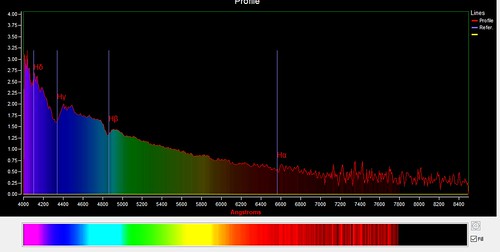 Vega Emission Lines Labeled by Cyrus Beh, on Flickr
Vega Emission Lines Labeled by Cyrus Beh, on FlickrUsually, stars exhibit absorption spectra. However, yesterday I came across Gamma Cassiopaeiae, also known as Navi. This star has emission lines at H-alpha and H-beta!
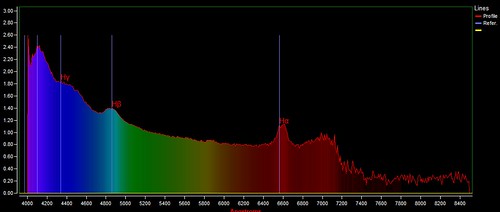 Navi Emission Lines Labeled by Cyrus Beh, on Flickr
Navi Emission Lines Labeled by Cyrus Beh, on FlickrLots of fun, and science anyone can do.

